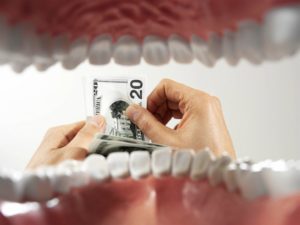Welcome to my dental hygiene blog, where I will share tips to help you achieve your clinical goals. If you are a dental hygienist looking to enhance your communication and clinical skills, learn time management best practices, and improve clinical outcomes, this guide is designed just for you.
Knowledge is key:
If you want to empower yourself and the patients you serve with knowledge, it is advised that you subscribe to newsletters and dental hygiene magazines to educate yourself on all it is to know about the latest trends, techniques, and advancements in your field. If there is a specific subject you are passionate about, share your enthusiasm for learning with your doctor and let them know that you want to learn more about it, and ask if you can attend continuing education courses to help you deliver outstanding care to your patients. After attending, share your experience and what you learned with the team. Consider implementing a new chairside service into your practice protocol to ensure that you maintain clinical excellence.
Oral-systemic link:
It is equally important to understand the oral-systemic link. Every patient in your chair deserves to know the value you bring by treating them comprehensively. Dental hygienists are not just glorified “tooth janitors.” We are an essential piece to the oral and overall systemic health puzzle. Yes, we want to establish a personal relationship with our patients and vice versa, but building a solid foundational relationship with your patients starts with your commitment to their care and overall health, and sometimes that means challenging them to take ownership, educating them, and being their advocate. Teamwork makes the dream work!
Leverage technology to increase efficiency:
Utilizing the latest advancements and cutting-edge techniques will help you be more efficient. In dentistry, we are constantly working on borrowed time. Time management is necessary as we fight to get our time back throughout the day. Let technology be your friend. For example, using ultrasonic or piezo scalers instead of hand scaling, those days are gone. Grab the intraoral camera and dust it off. It is an educational tool and serves as a monitoring device to track disease progression. Without pictures, you have no record.
I know you are thinking, let me add one more step to my day, but trust me, you will reap the benefits and save time in the long run. What happens when the doctor asks, and you have nothing to show for it? Intraoral photos are a time-saving tool for dentists when patients need treatment and insurance delays the process. Insurance companies often require a picture of the tooth to be treated to determine if the treatment is necessary. By providing a visual aid, the patient and the doctor can quickly understand the problem and avoid any delays caused by insurance. This is especially helpful for patients who are visual learners or may not fully trust their provider. Teeing up the treatment recommendation with an intraoral picture for the doctor’s exam helps the doctor quickly diagnose and return to his attending patient.
It is highly encouraged to explore the benefits of digital imaging, intraoral cameras, intraoral scanners, and other technological advancements that can enhance diagnostic accuracy and patient education.
There is a learning curve to implementing something new; allow yourself grace and know that you will elevate your dental hygiene practices in the long run by improving your clinical skills and providing more comprehensive care. Embrace the latest advancements, use them to your advantage, and see it as an opportunity, not a setback.
Personalized Care:
Every patient is unique, and providing personalized care is key to a successful dental hygiene appointment. Learn how to tailor your approach based on individual needs, addressing specific concerns, and creating a customized oral health plan. This will help to build patient trust. For example, if a patient has sensitivity concerns, you may want to ask them specific follow-up questions like, “Do you have hot or cold sensitivity?” or “Is it tooth specific or generalized?” You will want to address these concerns at the beginning of the appointment. Should you need an additional x-ray, you will have it for the exam. Additionally, a caries risk assessment is crucial in addressing this early on to help you formulate a treatment recommendation and give you some talking points, all while you are working instead of trying to squeeze it in at the end. This approach will help you determine the need for fluoride at the appointment’s end. If they have persistent sensitivity and you notice they have additional caries, then you may want to advise that they take home a fluoride gel or toothpaste as a maintenance dose.
Improve patient outcomes with adjunct services:
One way to ensure that you reach your clinical goals is to provide adjunctive services. If you want to maximize your time, you must adequately assess the patient and determine what service best suits them, based on their needs, maybe a combination of services. I compare it to a sales strategy. In sales, you identify the pain points and then sell a solution to the problem. Dental hygienists aren’t taught sales in school and the business side of dentistry. The reality is that most of us don’t like selling to our patients. I challenge you to look at it from a different perspective, in a way that you are addressing the patient’s needs by providing them with the knowledge to make an informed decision about their oral and overall health. To do this effectively, you need to ask open-ended questions. Open-ended questions open up dialogue. You will soon discover what keeps them up at night and what is important to them. If a patient has periodontal disease, I recommend services such as bacterial testing, locally delivered antimicrobial therapy, and take-home products like a Waterpik®. I recommend salivary testing, fluoride varnish, and take-home products, such as prescription strength fluoride toothpaste, for a moderate to high caries-risk patient. If no caries are present, sealants are a great option, including all posterior permanent teeth. Every office is different so it’s essential to have both a preventive and perio protocol in place to help guide you in your clinical decisions. The bottom line is that results follow if you focus on your patients’ needs. I find that more fulfilling and impactful.
Building a Reputation:
For dental hygienists aspiring to be known for clinical expertise, reputation matters. Explore strategies for building a positive professional reputation, including patient testimonials and community engagement. Put your accomplishments on the wall. Refer to recent research you have done, what you have learned at a recent course, or articles you have written.
As dental hygienists, remember that pursuing excellence is a continuous journey. By incorporating modern techniques, embracing efficiency, and staying committed to lifelong learning, you can truly make a difference in your patients’ oral health and overall well-being. For more clinical tips, follow my blog. Here’s to achieving clinical mastery and fostering healthier, happier smiles!




